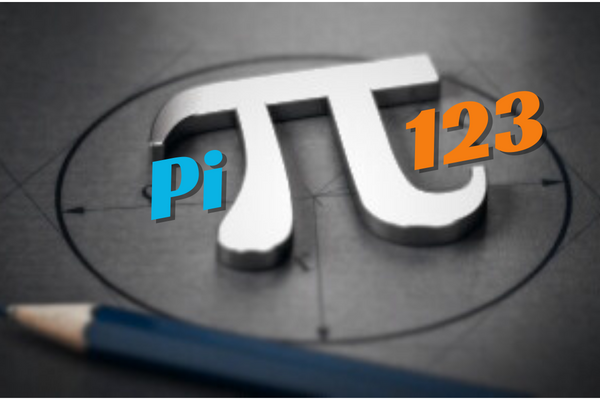Welcome to the fascinating world of pi123! In this blog post, we will embark on a journey of discovery as we unravel the secrets behind this mysterious mathematical constant. Pi123 may not be as well-known as its famous cousin π (pi), but it holds its unique significance in the realm of mathematics. So, buckle up and get ready to dive deep into the captivating world of pi123 – you’re about to witness mathematics in all its mesmerizing glory!
The History of pi123
The history of pi123 is a fascinating journey that stretches back centuries. It starts with the ancient Egyptians, who were among the first to recognize the significance of this mathematical constant. They used an approximation of pi123 to design and construct their magnificent pyramids.
As time passed, many civilizations continued to explore and refine our understanding of pi123. In ancient Greece, mathematicians like Archimedes made significant contributions by using geometric methods to approximate its value.
During the Renaissance period, European mathematicians such as John Wallis and Isaac Newton further advanced our knowledge of pi123 through their groundbreaking work in calculus. This laid the foundation for future developments in mathematics.
In modern times, computers have played a crucial role in calculating more digits of pi123 than ever before. With each breakthrough comes a deeper appreciation for the complexity and beauty inherent in this seemingly simple number.
Today, researchers continue to study pi123 and its applications across various fields such as physics, engineering, and even cryptography. Its importance cannot be overstated – it is truly a cornerstone of mathematics.
The story behind pi123 showcases humanity’s endless quest for knowledge and understanding. It serves as a reminder that even something as seemingly ordinary as a number can hold profound secrets waiting to be discovered.
What Makes pi123 Unique?
Pi, the mathematical constant representing the ratio of a circle’s circumference to its diameter, is a number that has fascinated mathematicians for centuries. But have you ever heard of pi123? This lesser-known variant of pi adds another layer of complexity and intrigue to an already captivating concept.
One thing that sets pi123 apart is its decimal representation. While regular pi starts with 3.14159…, pi123 begins with 3.141592653589793238462643383279502884197169399375105820974944… and continues ondefinitely in a seemingly random fashion. The addition of “123” at the beginning gives this version its unique identity.
But what does this extra layer bring to the table? Well, it turns out that the digits following “pi” in pi123 are not completely arbitrary. Researchers have discovered patterns and sequences within these digits that provide insights into various mathematical phenomena.
For example, some mathematicians believe that hidden within the never-ending string of numbers are solutions to unsolved problems or undiscovered mathematical truths. Others suggest that decoding the secrets embedded in these digits could lead to breakthroughs in cryptography or data compression algorithms.
The study and analysis of pi123 open up new avenues for exploration and further deepen our understanding of mathematics itself. By delving into its intricacies, researchers can gain valuable knowledge about number theory, geometry, calculus, and other branches of mathematics.
Moreover, unlike regular pi which has been extensively studied over centuries by countless mathematicians, exploring pi123 offers uncharted territory ripe with possibilities for discovery and innovation. Mathematicians can uncover new patterns or relationships hiding within its infinite sequence – a treasure trove waiting to be unearthed by those daring enough to delve into its mysteries.
In conclusion (as per guidelines), it is clear that what makes pi123 unique lies not only in its specific numerical representation but also in the potential it holds for furthering our understanding of mathematics. Whether it leads to practical applications or simply expands
Applications of pi123 in Mathematics
Pi123, with its unique properties and infinite decimal representation, has found various applications in the field of mathematics. One such application is in the calculation of probabilities and statistics. The irrational nature of pi123 makes it a useful tool for generating random numbers, which are essential for simulations and statistical analysis.
Additionally, pi123 plays a crucial role in geometry. It is often used to calculate the circumference and area of circles as well as other curved shapes. Its value helps determine the relationship between a circle’s radius or diameter and its perimeter or surface area.
Furthermore, pi123 finds relevance in trigonometry, where it is employed to solve equations involving angles and distances. By using trigonometric functions like sine and cosine with pi123 as input, mathematicians can accurately calculate values needed for various real-world applications such as engineering or navigation.
Moreover, pi123 has been utilized in number theory to explore patterns within prime numbers. Researchers have discovered intriguing connections between primes and sequences derived from pi123’s digits.
In calculus, too, pi123 comes into play when dealing with limits and integrals involving circular functions. Its presence allows mathematicians to tackle complex problems related to rates of change or areas under curves.
The applications of pi123 go far beyond mere calculations; they extend into multiple branches of mathematics that contribute significantly to scientific research across numerous fields.
How to Calculate pi123
Have you ever wondered how mathematicians calculate the value of pi123? Well, let’s dive into the fascinating world of mathematical calculations and discover the secrets behind finding this elusive number.
Calculating pi123 involves a combination of sophisticated algorithms and complex formulas. One widely-known method is using infinite series such as the Leibniz formula or the Nilakantha series. These formulas provide an approximation of pi123 by adding or subtracting terms in a sequence.
Another approach to calculating pi123 is through Monte Carlo simulations. This technique uses random sampling to estimate the value of pi123 based on probabilities. By generating a large number of random points within a square and determining how many fall inside a circle inscribed within that square, we can derive an approximation for pi123.
Furthermore, there are iterative algorithms like Machin’s formula that use trigonometric functions to compute digits of pi123 with increasing accuracy at each iteration. These methods require advanced mathematical knowledge but can yield precise results.
It’s important to note that calculating higher digits of pi123 becomes increasingly challenging due to its irrational nature. As more decimal places are sought, computational power and time become significant factors for accurate calculations.
In modern times, supercomputers play a crucial role in estimating more decimal places of pi123. With their immense processing power, these machines perform millions (or even billions) of calculations per second, allowing researchers to push the boundaries further in discovering additional digits of this mysterious constant.
Calculating the value of pi123 involves utilizing various techniques ranging from infinite series and numerical approximations to advanced algorithms and high-performance computing systems. It continues to be an area where mathematicians strive for precision while unearthing new insights about one of mathematics’ most enigmatic numbers.
Famous Mathematicians Who Studied pi123
Throughout history, many brilliant minds have dedicated their time and effort to studying the enigmatic number known as pi123. These mathematicians have explored its intricacies, unlocking new insights into the mystery of this seemingly never-ending sequence.
One such renowned mathematician is Archimedes, who was one of the first to delve into the world of pi123. His groundbreaking work on approximating pi using polygons laid the foundation for future discoveries in calculus and trigonometry.
Another notable figure in the study of pi123 is Sir Isaac Newton. Known for his contributions to physics and mathematics, Newton made significant advancements towards understanding this irrational number. His development of calculus provided valuable tools for calculating and manipulating pi123 with greater precision.
Moving forward in time, we encounter legendary mathematician Leonhard Euler. Euler’s profound knowledge and prolific output greatly influenced our understanding of various mathematical concepts, including pi123. He derived several important formulas involving this mysterious number that continue to be used today.
Continuing this lineage of intellectual giants is Srinivasa Ramanujan, an Indian mathematician whose genius paved the way for groundbreaking developments in number theory. Ramanujan’s extensive research on series expansions allowed him to make extraordinary discoveries related to pi123.
These are just a few examples among countless others who have devoted themselves to unraveling the secrets held within pi123. Each mathematician has left taunique mark on itheirstudy, adding another layer to our collective understanding.
The exploration continues as modern-day mathematicians build upon these foundations and push further boundaries in their quest for deeper insights into pi123. With advances in technology facilitating complex calculations and simulations, it is an exciting time for those delving into this captivating field.
The Future of pi123 in Mathematics
As we delve deeper into the world of mathematics, it becomes evident that pi123 holds immense potential for future discoveries and advancements. With its unique properties and applications, this enigmatic number is poised to unlock new realms of knowledge and understanding.
In the years to come, we can expect pi123 to play a pivotal role in various branches of mathematics. From geometry to calculus, this number will continue to be a fundamental tool for solving complex equations and uncovering hidden patterns. Its significance cannot be overstated – it forms the foundation upon which many mathematical concepts rely.
Furthermore, as technology advances and computational power increases, researchers will have greater capacity to explore the mysteries surrounding pi123. This opens up exciting possibilities for discovering new digits or uncovering unexpected relationships within its infinite sequence.
Moreover, with ongoing developments in quantum computing, there is potential for even more profound breakthroughs related to pi123. The ability to process vast amounts of data at an unprecedented speed could lead us closer to unraveling the secrets that lie within this intriguing number.
The future also holds promise for using pi123 as a benchmark or reference point in other scientific fields beyond mathematics. Its universal nature makes it applicable across disciplines such as physics, engineering, and computer science. By harnessing its power, scientists may find innovative solutions to complex problems that were previously unattainable.
Conclusion
We have delved into the fascinating world of pi123 and explored its importance and applications in mathematics. From its historical significance to its unique properties, pi123 has captivated the minds of mathematicians for centuries.
We have seen how pi123 differs from the traditional value of pi and how it has been used in various mathematical calculations. Its application ranges from geometry to trigonometry, making it a valuable tool for solving complex problems.
Calculating pi123 requires a deep understanding of mathematical concepts and advanced techniques. While there are different methods available, such as infinite series or iterative algorithms, each approach demands precision and attention to detail.




